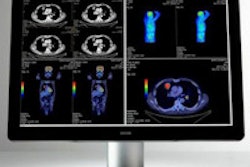Monday, December 1 | 3:50 p.m.-4:00 p.m. | SSE13-06 | Room S402AB
Researchers from Santa Barbara Cottage Hospital will show how the ability to prepopulate fields automatically in radiology reports -- made possible by tight integration of RIS, PACS, and reporting systems -- bolsters radiologists' efficiency and accuracy.Believing that the integration of RIS, PACS, reporting, peer review, and billing at their institution had yielded significant efficiency, the group sought to quantify these benefits. They first surveyed staff and resident radiologists with a five-point survey assessing the impact on efficiency and error avoidance, said senior author Dr. Michael Trambert.
"Our residents travel to other programs in Los Angeles where they do not enjoy this tight integration, similar to most other enterprises, and it was easy for them to contrast," he said.
They also performed an experiment by creating a scripted dataset of exams with report fields left blank that would have normally been prepopulated. Radiology residents and staff radiologists used speech recognition to add those data elements into the reports. The researchers timed the participants -- all of whom were experienced speech recognition users -- and counted both their corrected and uncorrected errors.
They found that radiologists save approximately 75 minutes per day with these report prepopulation capabilities. For a group of 20 radiologists with 16 working on any particular day, that offers savings of 20 hours per day, or more than two whole full-time equivalent (FTE) radiologists, Trambert said.
In other findings, radiologists avoided about 86 errors per day, many of which were corrected but some of which remained unnoticed, he said.
The integration saves radiologist FTEs, decreases error rates, improves reporting accuracy, adds to patient safety, and decreases radiologist fatigue, the researchers concluded.
"Sites that do not enjoy this integration should investigate how to incorporate such integration to glean the same remarkable benefits that we enjoy every day at our enterprises," Trambert said.




















